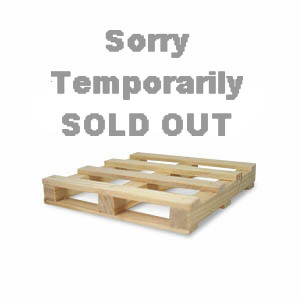 Do low inventory counts always equate to low costs? After all, inventory is more expensive the longer it’s held and maintaining low inventory levels does help to reduce the high costs of inventory damage and obsolescence. In addition, low inventory also means the company’s is reducing its daily cost of money. However, while a company’s costs to finance inventory can be a concern, a number of companies are surprised to see just how much their inventory costs them when their inventory counts are too low. In fact, an argument can easily be made that a company’s cost to maintain low inventory is just as high, if not higher, than having too much inventory. So how is this possible? More importantly, what are the main cost drivers of a company who maintains too low an inventory count?
Do low inventory counts always equate to low costs? After all, inventory is more expensive the longer it’s held and maintaining low inventory levels does help to reduce the high costs of inventory damage and obsolescence. In addition, low inventory also means the company’s is reducing its daily cost of money. However, while a company’s costs to finance inventory can be a concern, a number of companies are surprised to see just how much their inventory costs them when their inventory counts are too low. In fact, an argument can easily be made that a company’s cost to maintain low inventory is just as high, if not higher, than having too much inventory. So how is this possible? More importantly, what are the main cost drivers of a company who maintains too low an inventory count?
When thinking of low inventory counts, what’s the first thought that comes to mind? For example, what does your company do when you lack the inventory to meet a customer order? Well, you’ll likely need to rush parts & raw materials in from vendors. In all likelihood you’ll be faced with a vendor who’ll charge an expedite fee to secure the material & parts you so desperately need. This will immediately drive up your purchase price. This is the first cost you’ll incur for maintaining low inventory levels. The second cost will include the high costs of freight to rush those parts to your warehouse. In this case, you’ll likely pay for next day delivery which will drive up your per-unit freight costs on incoming parts. The third cost is the overtime you’ll pay your warehouse personnel to receive the parts, unpack them and repackage them, if needed. If you’re a manufacturer, you could incur additional costs pertaining to overtime in manufacturing. Finally, you’ll probably have to cover the cost of freight to your customer’s location for being late. In this case, you’ll incur the dreaded double freight bill. These four costs are summarized below.
- Increase purchase price
- High per-unit freight costs
- Overtime to receive and ship out again
- High freight for expedited delivery
At the end of the day, you’ll pay an expedite fee to get the parts from your vendors and another to rush finished goods to your customer. Up until this point you were convinced that low inventory meant low costs. Does all of this sound familiar? Does your company encounter these situations and if so, how do they impact your customer relationships? Now, isn’t it only fair to assume that there are several hidden costs to maintaining low inventory? Granted, there will always be a question between having too much or too little inventory and it’s often a struggle to find that perfect balance. Regardless, companies must continually assess their inventory in order to understand its true cost drivers.
Managing inventory is a balancing act and relies upon the ability to find that happy medium between too little and too much inventory. However, the task becomes much easier when companies recognize that neither end of the spectrum is the solution. Protect your company against high holding costs of inventory but be aware that low inventory has its costs as well.
